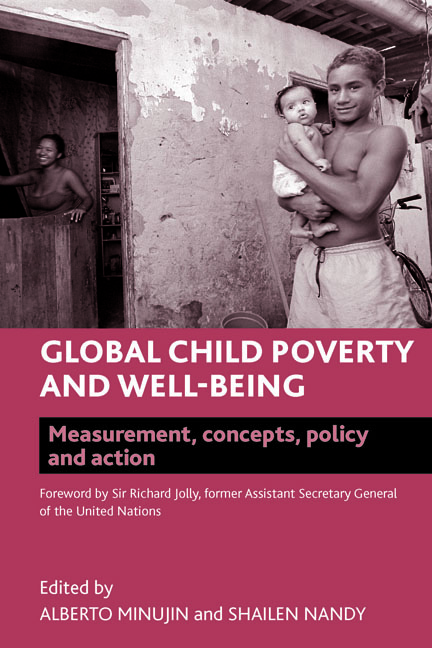seven - Child well-being in the US: proposal for the development of a ‘Tots Index’ using the human development conceptual framework
Published online by Cambridge University Press: 07 September 2022
Summary
In my beginning is my end. (T.S. Eliot, Four quartets)
Introduction
US society and investments in both the public and private sectors show a concern for young children and their well-being, a concern that has resulted in some very hopeful advances. In health, infant death rates have been declining steadily since the 1940s (Kung et al, 2008), smoking during pregnancy is increasingly rare, and vaccination rates have been rising. In terms of education, there has been a significant increase in both preschool and nursery rates, from nearly half of children in fullday nursery in 1995 to two thirds in 2006 (Land, 2008). In addition to these important signs of progress, there have been a number of innovative local programmes, such as the Olds’ Nurse Partnership, the Abecedarian Project and others, that are internationally studied and replicated as ‘best practices’ to set children on a trajectory of success.
Yet recent international comparisons show us that efforts to support every child to live to his or her full potential are not achieving impressive results for all children. According to the Organisation for Economic Co-operation and Development's (OECD) 2009 publication Doing better for children:
• While US average family income for children under 18 is six times higher than the average for the 30 OECD countries, child poverty rates are among the highest, with more than one in five children living in a poor household.
• US incidence of low birth weight children is among the highest of OECD countries; at 8.1%, the rate is nearly double that of Iceland, Finland, Sweden and South Korea.
• The US ranks number 29 out of 30 OECD countries on teen births. Only Mexico has a higher rate.
• The average educational achievement of 15-year-olds compares poorly to other OECD countries on PISA, the international standardised exam (Programme for International Student Assessment) (US students are seventh from the bottom), and the US has larger gaps between good and poor school performers than all but five other OECD countries.
These facts are evidence of massive underperformance in child wellbeing as compared with other nations, virtually all of which have lower per capita incomes.
- Type
- Chapter
- Information
- Global Child Poverty and Well-BeingMeasurement, Concepts, Policy and Action, pp. 155 - 178Publisher: Bristol University PressPrint publication year: 2012



